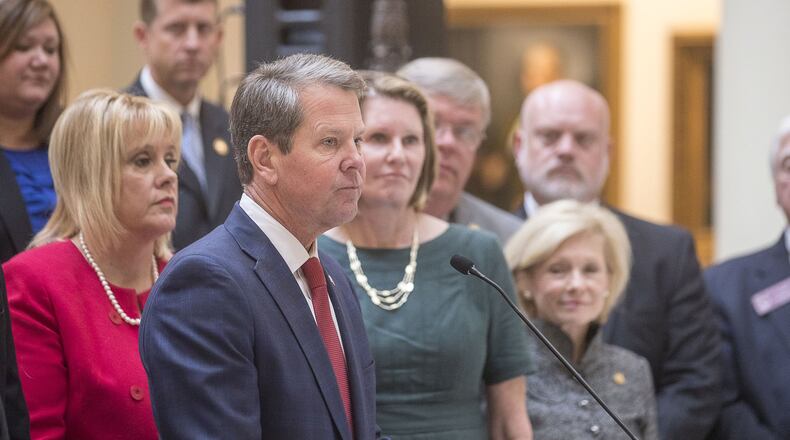Georgia is proving states know how to repair their own health-insurance markets, if Washington will give them the chance.
Gov. Brian Kemp has unveiled a pair of proposals to tailor federal programs to Georgia’s needs. One of them would loosen some of the market-strangling restrictions of the Affordable Care Act, or Obamacare. The other would allow a modest number of working Georgians who fall below the poverty line to gain insurance via Medicaid.
Importantly, the two proposals work together in a way the most commonly discussed alternative, expanding Medicaid, cannot match. Between them, Kemp’s proposals would make coverage more affordable for all uninsured Georgians and many who are insured, not only those covered by expanding Medicaid. And when we count federal dollars – which only makes sense, since Georgians also pay federal taxes – the two plans together would cost a fraction of Medicaid expansion’s $3.2 billion price tag.
Those below the poverty line who are working, or engaged in a similar activity like job training or volunteering, would have two new options. Either the state would pick up a worker’s share of his company’s insurance plan, or it would add them to a Medicaid plan with some features similar to commercial plans. They’d pay a small share of their premium (up to $11 per month) and have nominal co-pays.
Those features of the proposal would help people transition to commercial insurance as their incomes rise. That’s why the roughly 50,000 Georgians a year projected to gain coverage through this proposal are not expected to be the same people each year. Rather, because they’d be working or preparing for work, they’d be more likely to keep earning more, move off Medicaid, and make way for newer enrollees.
Whenever they cross that threshold, Kemp’s other proposal would make the transition smoother.
First, a reinsurance program – in which the state directly subsidizes the costs of the most expensive patients, rather than letting them drive up premiums for a small group of healthier patients – would lower premiums on the individual market by an average of about 10%. In some of the poorer regions of Georgia, the state would pick up a larger share of the tab, and premiums might fall by as much as 25%.
That plank would help the hundreds of thousands of Georgians who buy subsidized insurance as well as hundreds of thousands more who aren’t eligible for Obamacare subsidies. Some of the people hit hardest by Obamacare are the ones who make too much money to get help buying insurance, but still saw their individual-market premiums skyrocket over the past six years because of the law’s strict regulations.
Second, Georgians would no longer have to shop on the federal exchange, HealthCare.gov, to buy subsidized plans. They would instead be directed to private brokers and marketplaces, where they would see a broader array of choices.
More importantly, Georgians who are eligible for those subsidies – including families of four earning up to $103,000 this year – would be able to use them on more kinds of plans. They wouldn’t have to buy plans with all of the “essential health benefits” the ACA mandated, which helped drive up premiums. They would also for the first time be able to pool the subsidies with pre-tax contributions from their employers.
One key clarification here: All of the eligible plans would still have to cover pre-existing conditions. The ACA doesn’t allow states to waive that protection even if they wanted to do so.
In short, this would be a transformative step for health insurance in Georgia. More choices. Lower prices. More flexibility and customization.
Kyle Wingfield is president and CEO of the Georgia Public Policy Foundation, www.georgiapolicy.org.
About the Author
Keep Reading
The Latest
Featured

